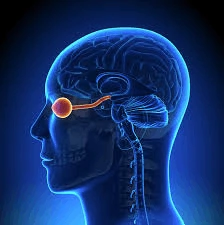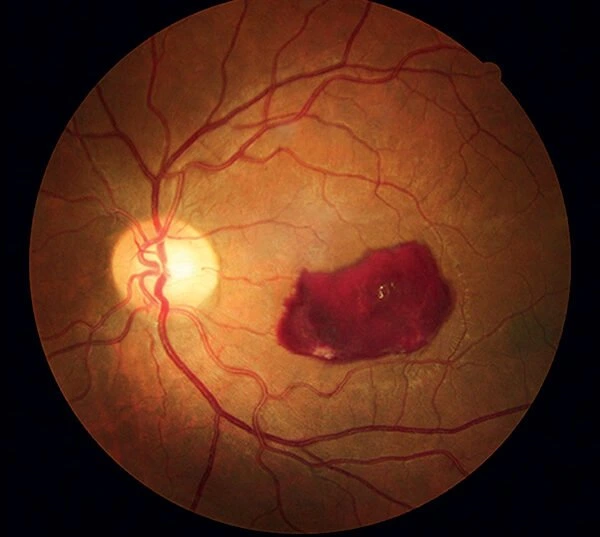
Neuro-ophthalmology is the subspecialty of ophthalmology that focuses on visual problems related to the nervous system. It combines the expertise of both neurology and ophthalmology and requires highly specialized training to diagnose and treat conditions involving the eyes, brain, nerves, and muscles. Nearly half of the human brain is dedicated to vision-related functions, including sight and eye movement, highlighting the complexity of this field.
In neuro-ophthalmology, patients are evaluated from neurological, ophthalmological, and general medical perspectives to ensure an accurate diagnosis and effective treatment plan. Consulting a Neuro Ophthalmologist in Pune can help patients avoid unnecessary or costly medical testing by receiving targeted, expert evaluation from the start.
Some of the common conditions assessed by neuro-ophthalmologists include optic nerve disorders (such as optic neuritis, ischemic optic neuropathy, and optic disc edema), visual field loss, unexplained or transient vision loss, visual disturbances, double vision, abnormal eye movements, thyroid eye disease, myasthenia gravis, and pupillary abnormalities.

Diplopia is double vision caused by a problem with the muscles that control the eye movements or the nerves that control these muscles. Many conditions can cause diplopia. Diplopia can be a consequence of strabismus especially in adults. Two common conditions that can cause diplopia are cranial nerve palsy and myasthenia gravis. Cranial nerve palsy is more common in diabetics or individuals with high blood pressure, when the blood supply to the nerves controlling the eye muscles is interrupted. Normally the blood supply is restored by the development of collateral vessels and the double vision improves.
Treatment is to patch one eye to relieve the double vision. If the double vision persists, prism glasses are prescribed, or botulinum toxin may be injected into the extraocular muscles. If there is no improvement, eye muscle surgery can be performed.
Headache is one of the most common health complaints. Headaches can include symptoms that may affect vision or your eyes, but they are not directly caused by eyestrain. A thorough examination by the physician is recommended for any chronic or recurring headache. An eye exam by an ophthalmologist may be helpful in some situations. Headaches are caused by a variety of factors and can be divided into the following categories:
This is the most common type of headache. The pain may be felt in the forehead, temples, neck, or around the eyes. The presumed cause for this type of headache is stress, sleeping or working in unusual positions, clenching jaws, grinding teeth, or chewing gum. While this headache is temporary and can be relieved by usual headache medicines.
Migraine headache most commonly affects women and nearly 20 % of the population is affected by this headache. The headache occurs due to swelling of the blood vessels of the scalp, causing throbbing pain, nausea, sensitivity to light, sounds, or odors, and pain that increases with movement.
Migraines can run in families and can affect young children as well. It is not clear how a migraine occurs, but it is believed that the basic cause is an abnormality of serotonin, which is a chemical used by the brain cells. During a migraine, changes in serotonin levels cause the blood vessels in the brain to constrict. This decreases oxygen supply in the brain. In rare cases, a stroke is also possible.
Cluster headaches are less common than migraines and affect mostly men. They are called cluster headaches because they come in daily bouts of 30 minutes to two hours and continue for one to two months. These bouts can occur several times a year. There is severe pain felt on one side of the head and accompanied by tearing or red eye on the affected side, sweating, and stuffy nose.

When there is increased pressure of the fluid surrounding the brain there could be headache. Often there are symptoms like blurred vision, halos, and sensitivity to light. Examination of the eye can give clues to the cause of headache. Headaches can also be caused by high blood pressure or brain tumors.
Optic neuritis is inflammation of the optic nerve. The optic nerve carries impulses from the retina in the back of the eye to the brain and enables the brain to interpret images. This nerve is crucial for vision development. This condition may affect one or both eyes, and symptoms may appear slowly or over a few days. Some of these symptoms include blurred or dim vision, abnormal color vision, or pain in the back of the eye socket or when moving the eyes. These symptoms may get worse with heat or exhaustion. The causes of optic neuritis include multiple sclerosis, viral infections, and Leber’s optic neuropathy. Steroids are sometimes used to treat optic neuritis. In most patients, vision will significantly improve or return to normal with or without treatment.
When one is going for the evaluation, one should carry all relevant reports, reports of CT and MRI scans and the actual films. Take the complete list of medications to show the neuro-ophthalmologist. Most probably pupils will be dilated to examine the optic disc and fundus.
A thorough history and examination is performed. Complete eye examination is performed followed by special tests like visual field assessment to ascertain the cause of the eye problem.
Most diseases are curable if identified early or else they leave some residual visual deficit.
© 2025. Axis Eye Clinic | All Rights Reserved | Created & Crafted by Itorix Infotech